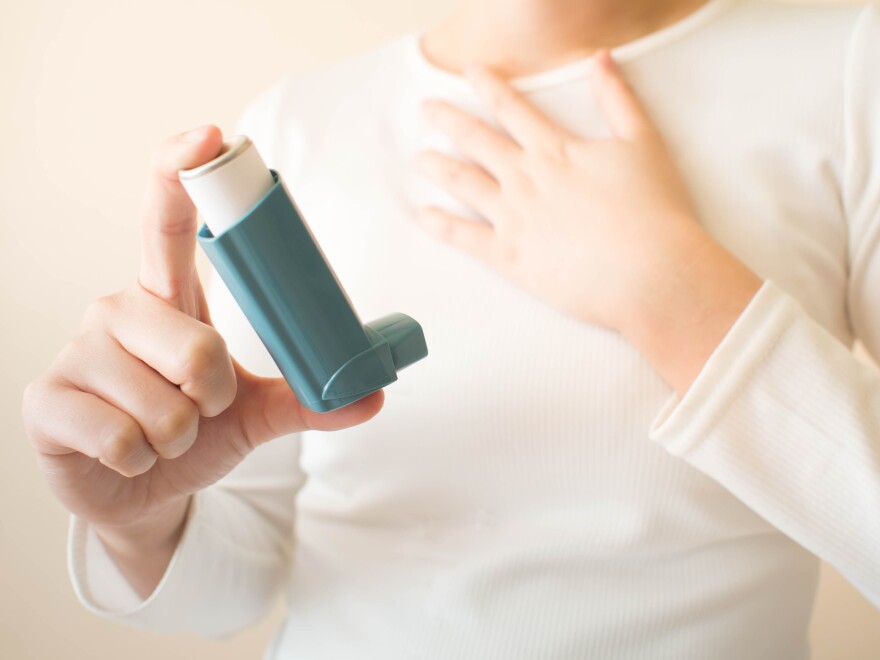Cherrelle Curry has been living with asthma for almost 30 years. It’s a disease that she says she “wouldn’t wish on anyone.”
“It's very dangerous. It’s nothing to play with,” Curry said. “I'm used to it, but I know my limits.”
Curry said she’s been hospitalized about five times since she was diagnosed at age five and that her most recent asthma attack happened last summer while she was pregnant. After a few attempts at using her rescue medication, Curry said she was still struggling to breathe.
"I felt like my breathing was really constricted,” she said. “Literally using every accessory muscle that I have to breathe.”
She texted her husband, who was in the adjacent room. He helped her put her clothes on and rushed her to the hospital.
“I literally carry an inhaler in my car. I leave one in my living room, so I can get to it quick if I need to
use it,” she said.
Curry said her asthma symptoms are more controlled when on vacation in Florida, and she barely uses her medication then.
“It’s like the air is different down there,” she said.
The Asthma and Allergy Foundation of America released a report this month listing Rochester as the second most challenging city to live in if you have this chronic lung condition.
The foundation releases its Asthma Capitals list and report annually. Rochester was ranked 10th last year but jumped to second this year. Allentown, Pennsylvania, is first.
Officials said the ranking was based on three criteria: prevalence, emergency room visits and deaths.
“All those categories can change over time, and Rochester increased in some of those areas,” said Kenneth Mendez, president and CEO of the Asthma and allergy Foundation of America.
Mendez said overall, cases of asthma have become more severe and prevalent because of climate change because it is making allergy seasons longer and more intense.
He also said climate change is causing more wildfires, which is affecting air quality. Last summer, smoke from Canadian wildfires drifted over the Rochester area, causing several days of impaired air quality.
“The triggers in the air, pollen from allergy seasons all contribute to people getting more severe asthma or worse asthma or allergies, if they never had them before,” Mendez said.
September is the peak month for asthma. This is the time of the year when asthma-related hospitalizations tend to increase due to allergies and circulating viruses, Mendez said.
Dr. Jessica Stern, an allergist and immunologist at University of Rochester Medical Center, said aside from those environmental shifts, asthma prevalence in the Finger Lakes region also stems from various systemic issues.
“There are factors within Rochester that we know cause certain populations to have inequitable outcomes,” Stern said. “Redlining, systemic racism, inadequate access to care, stress on our most marginalized populations are all reasons for an increased asthma burden.”
Stern also acknowledged poor housing conditions as a contributing factor to Rochester’s “asthma burden." She said Rochester’s older housing stock may put people at risk of exposure to different allergens, particularly in lower-income communities.
“You can't tell people to eradicate the mouse and mold in their home if they don't have the resources to do that, or another place to go, “Stern said. “That's hard to do.”
Stern believes grassroots efforts will be necessary for Rochester to make it off the Asthma Capitols list. — a system she refers to as a “community-based approach.”
“It all starts with educating our clinicians more, and educating our families more about self-management," she said.
Stern recommends seeing specialists to access the proper medication and treatment.



